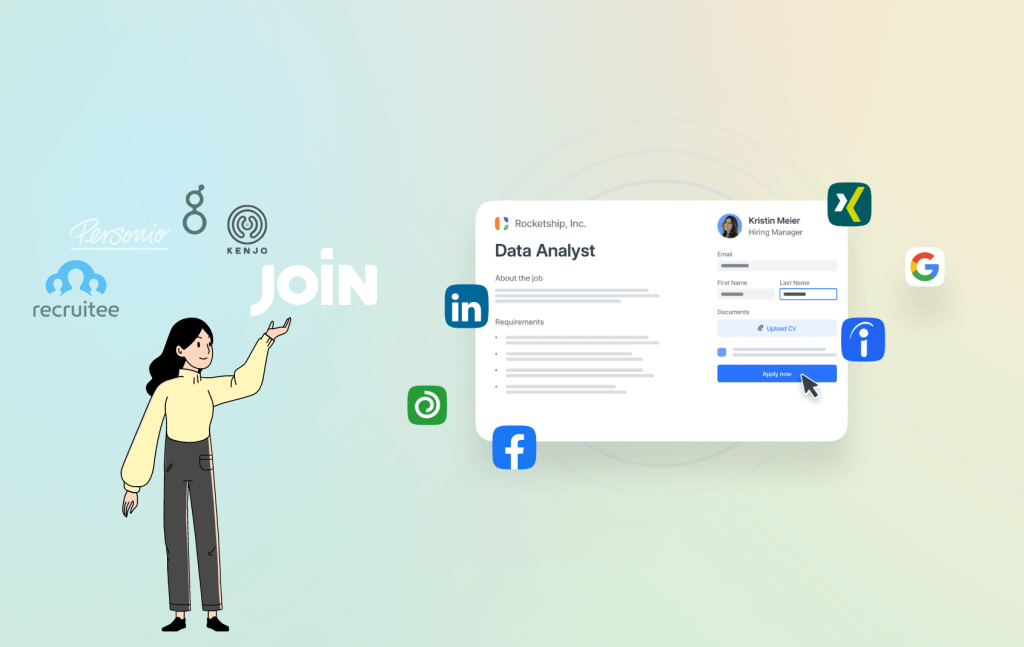What is human resource management?
DefinitionHuman resource management (HRM) deals with all personnel measures in a company. Its core task is the efficient and goal-oriented provision of employees. Thus, human resource management makes a major contribution to the success of a company.
Goals of human resource management
The main objective of human resource management is to make the best possible use of the workforce and thus contribute to the success of the company. Since social factors such as employee experience and satisfaction have a positive impact on economic factors such as productivity, they also play a major role in modern human resource management.
The roles of human resource management include:
- Recruiting and retaining employees
- Ensuring efficiency and productivity
- Increasing motivation
- Promoting a positive working atmosphere
- Improving the management culture
- Ensuring the ability to work
Tasks of human resource management
Human resource management covers an enormous range of tasks and responsibilities. These include:
Personnel policy: An important task of personnel management is personnel policy, which determines the basic orientation of personnel work. It thus forms an interface between human resource management and company management.
Human resources organisation: Human resources organisation is the way in which a human resources department is structured. A distinction is made between the organisational structure and the process organisation.
Organisational structure: Hierarchical structure and distribution of tasks and responsibilities within the HR department. This is often illustrated by organisational charts.
Process organisation: Processes within the HR department, e.g. recruitment processes.
Personnel planning: Within the framework of personnel planning, the personnel requirements of a company are determined and planned. Sub-areas are individual and collective personnel planning.
- Individual personnel planning: Measures for individual employees, e.g. career and succession planning.
- Collective personnel planning: Measures for departments or the entire company, e.g. personnel requirement planning, personnel deployment planning and personnel cost planning.
Recruitment/personnel marketing: In the hands of recruitment lies the provision of employees on the basis of personnel planning. A distinction is made between internal and external recruitment.
- Internal recruitment: Recruitment of staff within the company, e.g. through promotion and transfer.
- External recruitment: External recruitment of staff, e.g. through job advertisements and recruitment agencies.
Personnel administration: Personnel administration is responsible for all administrative tasks of personnel management. This includes drawing up employment contracts, creating personnel files, processing working hours, holidays and absences, and managing personnel data.
Personnel communication: Personnel communication refers to the internal operational information management. Communication instruments are, for example, onboarding events, intranet, company newsletters, or staff meetings.
Personnel deployment planning: Personnel deployment planning determines which employee is deployed when, where, and how in the company. It covers the entire period from the first to the last working day of an employee.
Personnel support / personnel service: Another important task of personnel management is personnel support, i.e. advising and supporting employees, and the provision of material resources such as work clothes, laptops, or mobile phones.
Personnel development: Personnel development includes all necessary measures for the further qualification of employees. This can be achieved with the help of further education, training and coaching.
Remuneration management / staff remuneration:
The task of remuneration management is to communicate all financial benefits of the company to its employees. This includes monetary benefits and benefits in kind.
- Monetary benefits: e.g. wages, salary, bonuses, and allowances.
- Non-cash benefits: e.g. employee discounts, job tickets, and mobile phones.
Personnel controlling:
Personnel controlling evaluates personnel data and uses it to derive trends and forecasts for the company. In this way, for example, personnel costs and staff numbers can be better planned and controlled.
Human resource management: Practical examples
Fitness Food Ltd wants to increase its production and calculates the need for 15 new production workers (personnel planning). An HR management software can help with this, as shown below.
With the help of JOIN’s recruiting software, the team creates a job advertisement and publishes it on various job boards. The best candidates are selected from the incoming applications. They receive an employment contract and are added to the personnel database.
On their first day of work, the new employees take part in an onboarding event. They also receive their individual duty roster and special work clothes.
Since a forklift licence is required for certain tasks in production, three of the new employees will be qualified accordingly in the coming weeks through employee hard skills training.


